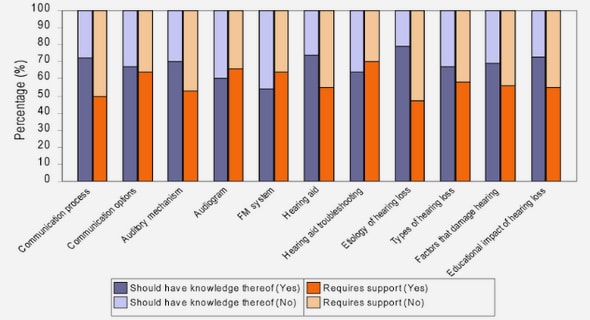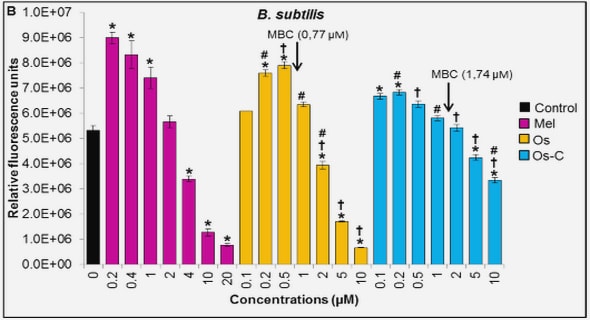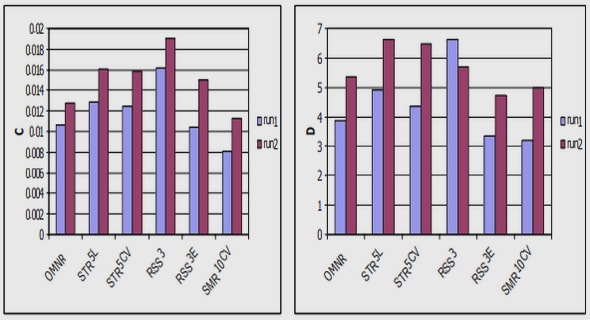Get Complete Project Material File(s) Now! »
Polyaromatics with sulfonic acid directly attached to a backbone
Synthesis by post-sulfonation
A common way of an ionic group incorporation to a polymer aromatic backbone is its post-sulfonation. Functionalization in such a way may be not complete either inhomogeneous.
Two ways of post-sulfonation have been widely implied to PAES (as cheap, easy in production and modification, and thermo-mechanically attractive materials): i) electrophilic substitution by sulfuric acids, and ii) chemical grafting. The former method results in -SO3H substitution in the ortho-position to activating ether-bridge. Probably, the first research on sulfonation of the commercial PAES UDEL for its application as a proton conductor was reported by Nolte et al. [15]. Strength of sulfonating agents was investigated [16]; chlorosulfonic acid together with oleum are found to be too strong agents for some polymers, e.g. for poly(ether ether ketone) (PEEK), leading to a polymer chain scission. Therefore, some polymers must be treated exclusively with mild agents (acetyl sulfate, trimethylsilyl chlorosulfonate [17]), even though the reaction time is much longer and total sulfonation cannot be achieved .
Poor stability of a sulfonic group in proximity to an electron-donating specie at acidic aqueous conditions led to elaboration of another method of chemical grafting through metalation (introducing of a metal), occurring in ortho-position to a sulfone-bridge. First trials of this method, though, were conducted on poly(phenylene oxide)s, containing no electron-withdrawing species, therefore metalation occurred both at the aromatic ring and at its substituents [19, 20]. Kerres et al. [21-25] developed such a method for PAES, additionally implying either chemical (with the help of alkylhalogenides) or physical (acid-base blend) crosslinking to improve mechanical properties of the materials. Further the method of lithiation – sulfination – oxidation was deeply studied by the group of Jannasch to introduce alkylsulfonated substituents in ortho-site to the sulfone-bond in a polymer [26]. And recently they produced a monomer and a hydrophilic oligomer in the same way in order to obtain block-copolymers of high performance [29, 30].
Synthesis by condensation of a disulfonated monomer. Random and block-copolymers with SO3H in ortho-to-ether position
The wide range of polyarylenes was synthesized by a group of McGrath by method of polycondensation with a monomer, already bearing two acid groups, its patented product SDCDPS
The first successful synthesis of such an ionic monomer and its further copolymerization with 4,4′-isopropylidenediphenol and 9,9′-bis(4-hydroxyphenyl)fluorene were performed by Ueda et al. [31], but the group of McGrath [29] improved production of the monomer, enlarged the range of possible copolymers and studied them in terms of materials for energy conversion.
The series of random copolymers showed the best performance at total humidification for a couple of SDCDPS with 4,4′-bisphenol [29, 32, 33]. It will be further named as BPSH moiety (Fig. 1.1 (b)) and statistic polymers thereafter r-BPSH. In order to study properties of block-copolymers, the same BPSH moiety was used as a hydrophilic block, but chemical structure of a hydrophobic block was varied, either different perfluorinated spacers were introduced between the two blocks. Most of the materials show good connectivity of the proton-conducting channels that leads to high range of conductivities at both reduced and 100 % humidity (10−3 – 10−1 S/cm). At the same time, due to a robust and yet interconnected hydrophobic phase the polymers are characterized by sufficiently high mechanical properties together with low degree of in-plane swelling.
Such properties are explained by authors from the point of the well-developed separation of phases and formation of extended and broad ionic domains (in one reference dimensions of ionic domains are estimated by microscopy as 14 – 24 nm for the hydrophilic blocks of 5 – 15 kDa [34], in another reference dimensions of the same species are calculated from SAXS as 21.2 to 36.4 nm [35]).
In order to compare performance of random and block-copolymers, synthesized from the ionic monomer SDCDPS, materials of the similar IEC 1.3 – 1.5 meq/g are studied. Among the series of random polymers r-BPSH-40 is chosen, which contains 40 % of sulfonated repeating units BPSH (and 60 % of non-sulfonated BPSH units) and is characterized by IEC 1.5 meq/g. Block-copolymers, in general, are comprised of a hydrophilic block BPSH and a hydrophobic block of different chemical composition. In such a way impact of the hydrophobic part is additionally studied. Fig. 1.2 proposes two graphs of conductivity dependence: a) on water uptake, and b) on humidity. The first one shows dispersion of the values for the most studied structures, reported in different publications. The names of each series correspond to those, given by authors; for better visualization chemical structures are additionally defined in Fig. 1.3. Ideally, parameter lambda (λ) reproduces amount of water molecules per sulfonic acid, however, not all the researchers note such data, hence, water uptake (WU) is used as percentage of polymer swelling in weight. The second graph estimates effectiveness of water retaining by the polymer. On both plots the random copolymer r-BPSH-40 is indicated with blue squares. Numbers are for different types of block-copolymers.
From both analyses, the block-copolymers 6FBPS-BPSH, BiSF-BPSH and PEEK-BPSH (structures presented in Fig. 1.3 (a-c)) show the best conductivities in the whole range of humidity, admitting that at total humidification their conductivities are in the range of 1.2 – 2•10−1 S/cm with the WU of 30 – 60 % only. The block-copolymers, having both PAES hydrophobic and hydrophilic blocks (BPS-BPSH) show comparable conductivities to their random examples (r-BPSH) at complete humidification, but they depend less on water uptake at reduced humidity (the slope, thus, activation energy of the BPS-BPSH is lower, than of its random analog). PI-BPSH, having poly(imide ether sulfone) as a hydrophobic block, and PPH-BPSH, having a bulky phenolphthalein moiety in both blocks, show the lowest conductivity range in dependence on water uptake or relative humidity, respectively. Therefore, we presume that: i) basic groups (such as imide in case of PI-BPSH), and ii) bulky species (both PI-BPSH and PPH-BPSH as examples) negatively influence the ionomer performance. The structures, characterized by the latter parameter, may create highly developed domains that close accessibility of the ionic sites, which are directly attached to the polymer backbone. The same drop in performance was observed for random copolymers, having non-ionic multiphenylene structures, such as fluorene [47].
A comparative study of polymers, containing bulky species was conducted: one sample was sulfonated through the fluorenyl moiety, the other – through the aromatic main chain, and a fluorenyl group stayed unmodified. Hydrolytic test showed better solubility of the latter type of polymers, compared to materials with ionic groups, attached to the fluorenyl specie. Therefore, it evidenced weaker interchain interactions between sulfonic groups, attached directly to a polymer backbone [47]. Additionally, the ionomers, having non-sulfonated bulky moieties (in particular fluorenyl), are characterized by low degree of water fraction in the polymer structure, which results in poorly developed separation between hydrophilic and hydrophobic domains in hydrated state (data from SAXS measurements) [47]. Thereby, negative influence of the bulky structures in a polymer backbone for the materials, having directly attached sulfonic groups to the other, non-bulky aromatic species is evoked; equally, positive influence of the same bulky structures is observed, when the sulfonic sites are bound to these multiphenylene moieties.
The block-copolymers 6FBPS-BPSH from Fig. 1.3 (a) (with equal lengths of the both blocks of 15, 10 and 6 kDa) [36] and BiSF-BPSH from Fig. 1.3 (b) (with equal block lengths of 15 kDa or hydrophobic to hydrophobic block lengths of 15 to 10 kDa) have highly fluorous hydrophobic blocks that provoke better structuration of their membranes. However, the prominent behavior of the polymer PEEK-BPSH from Fig. 1.3 (c) (in particular with equal block lengths of 13 and 17 kDa) [40] is not affected by increased hydrophobicity of one of the blocks, but rather by crystallinity, appearing due to the diphenylketone moiety.
Another important aspect proved by different researches is related to membrane elaboration procedure. McGrath et al. proposed two factors, which ameliorate an ionomer performance: i) a membrane after the solvent evaporation must be annealed at temperature higher, than the Tg of the hydrophobic block (annealing proceeded at 195 °C) [48]; ii) acidification of the membrane is better to be conducted at 100 °C rather than at room temperature [49]. The both corrections to the membrane production procedure increase its conductivity due to the more open hydrophilic morphology, thus, better connectivity of the ionic domains (verified by atom force microscopy (AFM)); additionally, the first modification increases mechanical properties and decreases WU of an ionomer.
The general trends for the block-polyarylenes, synthesized from the SDCDPS, are: i) ionomers with equal lengths of blocks show better structuration: longer the blocks, higher the connectivity of the hydrophobic and hydrophilic domains, leading to formation of a lamellar structure [34]; ii) block-copolymers retain water better than random copolymers at reduced humidity that affirms higher percolation degree at temperatures above 100 °C; iii) due to the block-copolymers’ priority of swelling through a membrane plane, rather than in-plane, these materials resist to higher WU level without deterioration of their performance.
Other types of disulfonated monomers have been produced, following the sulfonation method as for SDCDPS. Probably, the full list of structures is presented in a review article of Park et al. [17]. The most studied are: disulfonated 4,4′-difluorobenzophenone and disulfonated 4,4′-diaminodiphenylsulfone (Fig. 1.4).
The disulfonated 4,4′-difluorobenzophenone was polymerized both by nucleophilic substitution or by catalytic homocoupling to produce hydrophilic blocks of poly(arylene ether ketone) (PAEK) [50, 51] or poly(phenylene ketone) (PPK) [52], respectively. The polymers, having linear chains with no bulky moieties, showed high performance at reduced humidity and very tolerant stable gas permeability in a wide range of humidity [52]. Such properties are referred by authors to the rod-like rigid structure of a PPK hydrophilic block. However, when one uses bulky comonomers (naphthalene), again the drop of performance is observed [50].
Disulfonated 4,4′-diaminodiphenylsulfone is a widely used ionic monomer for production of poly(imide)s (PI) [53-58]. The materials show high conductivity at complete hydration and at high degree of sulfonation (IEC > 1.8 meq/g), but their selectivity for direct methanol FC is more promising, than the performance in PEMFC, therefore they are usually produced for DMFC applications.
Ionomers with SO3H bonded in other than ‘ortho-to-ether’ position
The polymers, described in the previous section, contain sulfonic acid groups in ortho-position to the ether-bridge. As it was mentioned before [21, 26, 59], such a combination is easily cleaved at harsh conditions, leading to degradation of the polymer. Moreover, acidity of the SO3H is not activated by the ether in the same way as it could be with presence of an electro-withdrawing group in proximity [60]. For this reason several groups worked on elaboration of polymers:
i) having poly(arylene sulfone) backbone with acid groups attached in ortho-position to the sulfone bridge [27, 59, 61, 62]. There are two main ways of their production: either by condensation with thio-compounds (sulfides or thioarylenes) and further oxidation of S-bridges, or by introduction of the sulfonic group to the polymer chain by a common method of lithiation [28];
ii) having sulfonic acid in meta-position to the ether bridge [60, 63] by implying the naphthalene-moiety into a polymer backbone.
In the latter case SO3H is neither activated, nor deactivated by electro-donating group in meta-position, hence, the materials of the first type are much more effective in performance. The group of Guiver produced two series of random PAEs: one, having a partially fluorinated backbone (SPAE), and another with highly polar nitrile groups in the main chain (SPAEEN) (Fig. 1.5). The both materials were characterized by high conductivity at fully hydrated conditions even at low temperature: 1.5 – 8•10−2 S/cm for the ionomers of IEC 1.0 – 1.9. Interestingly, the polymer series, which contains partially fluorinated hydrophobic part, was characterized by much higher water uptake, than SPAEEN (Fig. 1.6 (a)). Presumably, such property is related to interactions between dissociated sulfonic groups and nitriles, which create physical bonding between polymer chains. Due to this phenomenon SPAEEN even of high IEC (1.9 meq/g) does not show important increase in conductivity, compared to SPAE .
Table of contents :
Introduction
Chapter 1. State of the art
1.1. Polyaromatics with sulfonic acid directly attached to a backbone
1.1.1. Synthesis by post-sulfonation
1.1.2. Synthesis by condensation of a disulfonated monomer. Random and block-copolymers with SO3H in ortho-to-ether position
1.1.3. Ionomers with SO3H bonded in other than ‘ortho-to-ether’ position
1.2. Polyaromatics with sulfonic acid on a phenyl spacer
1.3. Polyaromatics with sulfonic acid on aromatic bulky structures
1.3.1. On a fluorene
1.3.2. On other multiphenylene structures
1.4. Polyaromatics with sulfonic acid on a long spacer
1.4.1. C(O)PhSO3H and derivatives as pendent chains
1.4.2. O(CH2)xSO3H as a pendent chain
1.5. Polyaromatics with sulfonic acid on a perfluorinated spacer
1.5.1. Y(CF2)xSO3H as a pendent chain
1.5.2. Y(CF2)xSO2NHSO2CF3 as a pendent chain
Chapter 2. Synthesis part. Discussion
2.1. Synthesis of monomers
2.1.1. Synthesis of an ionic function 1a
2.1.2. Copper-mediated coupling
2.1.3. Synthesis of the S-containing ionic intermediate 4e
2.1.4. Demethylation-hydrogenation of ionic intermediates 3a and 4e
2.1.5. Purity of the monomers
2.2. Synthesis of polymers
2.2.1. Polymerization of the monomer 2
2.2.2. Polymerizations of the monomers 3 and 4
2.2.3. Synthesis of ionomers by copolymerization of two ionic monomers
Chapter 3. Characterization of ionomers
3.1. Properties of the (PAE)s series I2 and I4
3.1.1. Thermal stability
3.1.2. Calorimetric analysis
3.1.3. Thermo-mechanical analysis
3.1.4. Bulk morphology
3.1.5. Water uptake
3.1.6. Conductivity
3.1.7. Oxidative stability test (OST)
3.2. Properties of random and block-(PAES)s series I3 and I5
3.2.1. Thermal stability
3.2.2. Calorimetric analysis
3.2.3. Thermo-mechanical analysis
3.2.4. Bulk morphology
3.2.5. Water uptake
3.2.6. Conductivity
3.2.7. Oxidative stability test (OST)
3.3. Properties of the random (PAES)s series I1 and I3
3.3.1. Thermo-mechanical properties
3.3.2. Water uptake and conductivity
3.4. Properties of the ionomers by copolymerization of two ionic monomers
3.4.1. Thermo-mechanical properties, morphology
3.4.2. Water uptake and conductivity
Conclusions
Perspectives
Characterization techniques
Annexes
References


